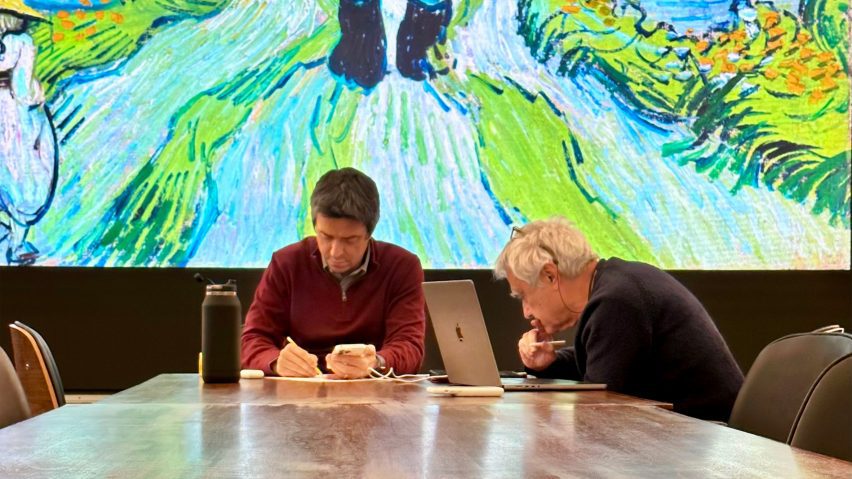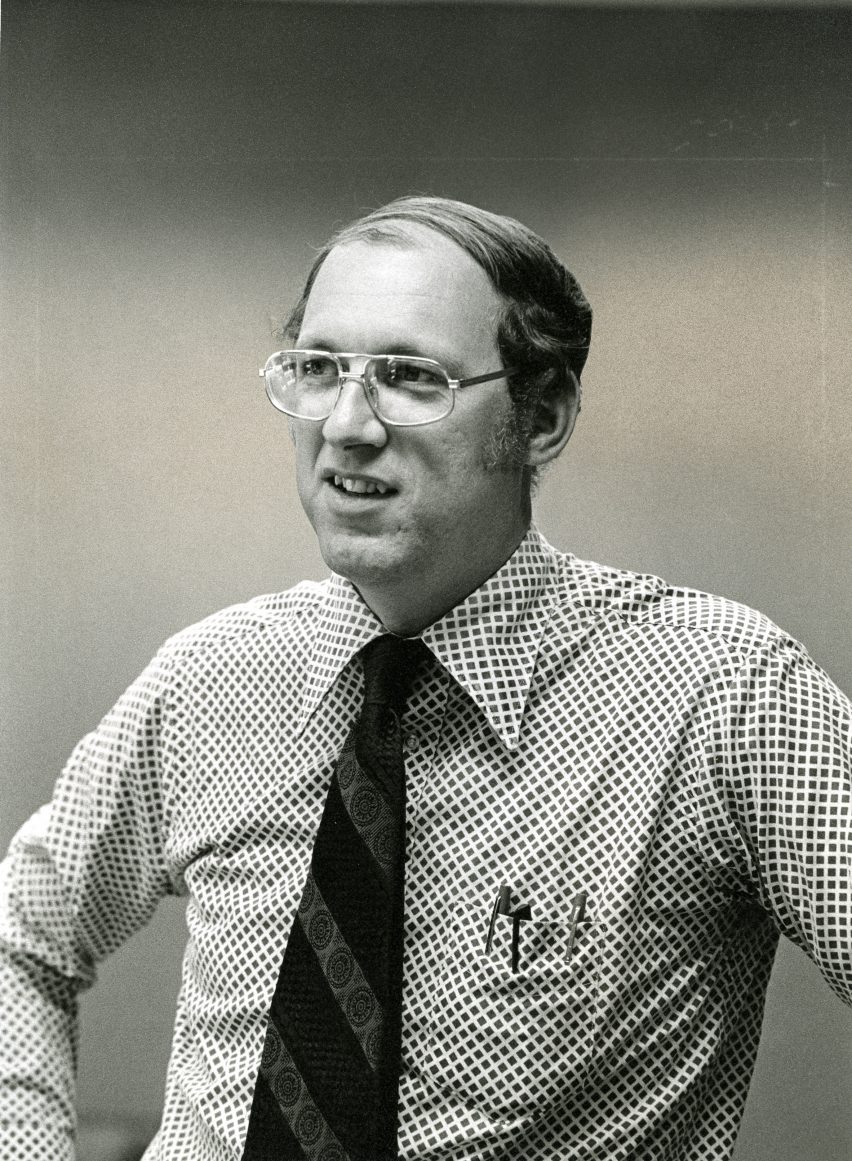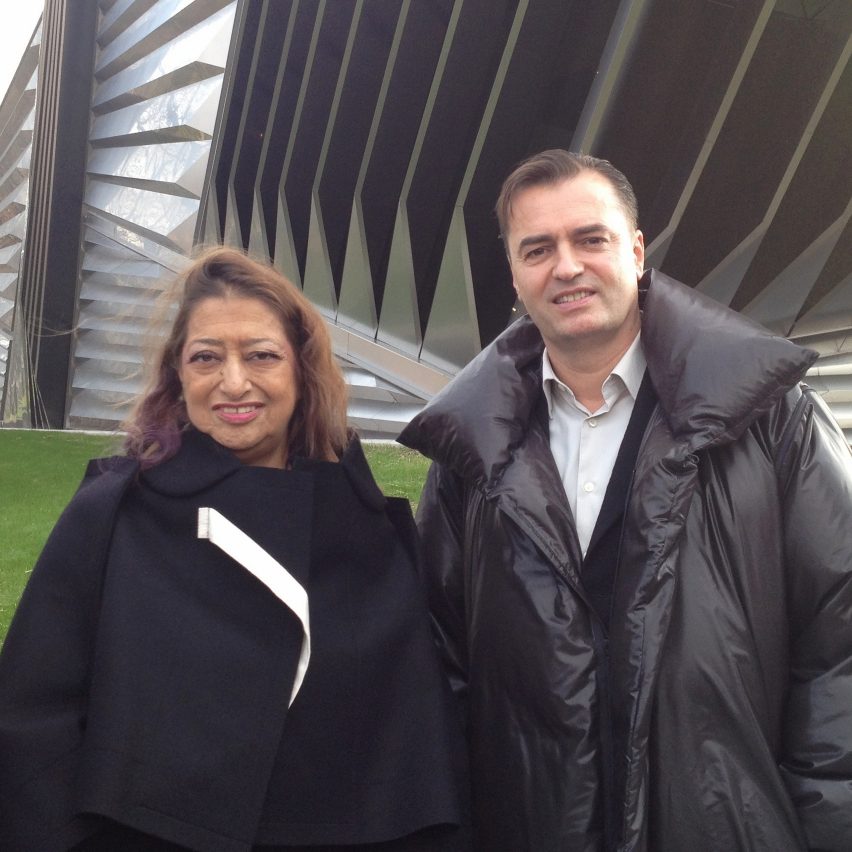
Architecture and design studios "need to be constantly thinking about the future"
Following the death of Rafael Viñoly, Dezeen examines how different studios founded by famous figureheads are approaching the issue of succession.
Many of the world's eminent architecture and design businesses are fronted by individuals with superstar status, but the recent death of Uruguayan architect Viñoly was a sombre reminder that these famous founders will not be around forever.
Viñoly's New York-based studio is now considering how to continue his legacy, with his son, Román Viñoly, describing that process as a "great responsibility" in an interview with Dezeen.
Employee-ownership on the rise
Different architecture and design firms are approaching this question in very different ways. A growing number have opted to become employee-owned. Among the first was US-based Gensler, the world's largest architecture firm, whose founder Art Gensler died in May 2021 aged 85.
The switch was initiated by Art in 1989 – 16 years before he stepped down as CEO and 22 years before his death. Gensler Co-CEO Andy Cohen believes the trend reflects a shift away from focusing on individuals within the architecture profession.
"I think if you look at the traditional architecture firm, it had the reputation of being a star system where you have that great visionary at the top and no one else really matters," Cohen told Dezeen.
"We like to say we are a constellation of stars and we are not a 'starchitect' culture."

Multidisciplinary design studio PriestmanGoode, whose co-founder Paul Priestman announced his departure from the company in January 2022, has long advocated this approach, having become employee-owned in 2016.
"We are much better employers as a result of employee ownership," said PriestmanGoode managing director Kirsty Dias.
"It's about moving away from a patriarchal model of 'you do that for me', to a much more balanced conversation. It's not just about profit share, it's much more than that – it's cultural."
That balanced conversation, she argues, makes people feel more emboldened to share their ideas and more invested in the outcome of projects and the future of the company.
Nevertheless, the UK-based architects' union the Section of Architectural Workers at the United Voices of the World Union has previously questioned how much power really gets transferred to employees given that most decisions are still made by a small number of directors.
Dias acknowledges the difficulties in making employee ownership work. "For it to be successful, it's a dialogue and you are in it together," she said. "It's a collaborative process and I think that transition can be challenging."

The nature of architecture and design businesses mean that ensuring longevity beyond the lifetime of founders can be tricky. Mergers and acquisitions are much less common in architecture than in other industries.
As noted in a Royal Institute of British Architects guide on succession planning, external sales of studios are "highly unlikely" because their project-based incomes mean that cashflow is inconsistent, and therefore unappealing to investors.
Likewise, management buyouts are increasingly rare because even senior architects do not often have the money to club together to buy a business.
Norman Foster's firm Foster + Partners is the exception to the rule, selling a majority stake to Canadian private investment firm HennickCo in October 2021 in a move that the studio said "allows for an orderly succession of existing partners over the long-term".
The studio founded by Richard Rogers, the world-famous high-tech pioneer who passed away in late 2021, has taken yet another approach.
"The profession has changed significantly"
Last June, it unveiled a name change, from Rogers Stirk Harbour and Partners to simply the letters RSHP. Like Gensler, it wants to emphasise collaboration.
"He would have been the first, as a very well-known, charismatic figurehead, to underline the fact that architecture is a collaborative art," RSHP partner Stephen Barrett said of Rogers.
"It's clearly easier, often, to have a narrative where you have an individual who is supposed to inculcate the values but also have the genius quality that we talk about, but the fact is that we all depend on each other, we are a team."
Rogers always intended for his name to be dropped from the firm eventually, arguing that architecture "is a living thing".
He planned his own succession long before his death – in fact laying the foundations some 30 years ago when he drew up a company constitution while the studio was still called the Richard Rogers Partnership.
In what Barrett calls an "extraordinarily prescient" move, Rogers decided that the firm should be parented by a charity in order to separate its ownership from individuals.
This means that to become a partner, individuals do not need to have enough capital to buy a share and – crucially for longevity of the company – it also means that when partners leave they do not take a chunk of value with them.
Profits generated by the studio are shared across staff, with 20 per cent going to charitable causes of employees' choosing, in an initiative that has raised nearly £20 million over the years.
RSHP claims to be the only architecture practice that has taken the charity approach and Barrett suggests Rogers' idea is "a model for others to follow".
Meanwhile, some deliberately choose not to plan for succession. OMA, founded by Rem Koolhaas, is content with having eight equal partners at the helm – including Koolhaas – who are replaced one-by-one by the natural passage of time.
OMA managing partner David Gianotten explained that this is the Dutch studio's own interpretation of shifting away from a starchitect model.

"It's on purpose that we would say we don't want any succession – it's the next generation taking over, it's not about trying to be Rem, or trying to be the next Rem," he told Dezeen.
"The time in which Rem became big or relevant was because the time allowed [it]," he added. "That is very, very different now – the profession has changed significantly; collaboration has become much more important."
"So it would be very naive to say one of us would be able to take a similar position or become the new figurehead. Architecture doesn't operate like that anymore."
Not thinking about the longer term comes with risks, however.
Dixon Jones, for example, a once-influential British architecture firm, was wound up in 2020 under mounting debts after three decades of trading. Its founders, Jeremy Dixon and Edward Jones, told Building Design that their failure to make a successful succession plan was to blame.
"It is hard to think long-term"
Then there is Zaha Hadid Architects (ZHA), whose famous founder died suddenly in 2016. The studio became employee-owned in December 2021 but only after a lengthy, public court battle between ZHA's principal, Patrik Schumacher, and the three other executors of Hadid's estate over the control of the business.
Additionally, ZHA still pays millions each year to Hadid's estate for the use of her name – handing over £3.8 million in 2021/22, which was four times its profit for the year.
Hugo Healing, a partner at leadership recruitment agency Odgers Berndtson who has worked with architecture firms, said studios can "absolutely" struggle to plan long-term because of the strong emphasis on their past projects and reputations.
"Architectural practices have their house style, one that is bound to the reputation and experience of its members," he explained. "How do you continue that style, how does that reputational journey continue seamlessly?"
His main piece of advice is that trying to persevere with the past is futile, however tempting it might be after a founder leaves.
"Where the organisation is so intrinsically linked to the identity of the founder, that's where succession planning has to be carefully considered," he told Dezeen. "Where we see firms challenged is when they try and replicate what's gone before."
PriestmanGoode's Dias believes that long-term business planning is key for design and architecture studios.
"It is hard to think long-term, but you have to make time for it," she said. "We need to be constantly thinking about the future, and what's going to happen next, and who will be doing my job in 10-15 years' time."
Dezeen in Depth
If you enjoy reading Dezeen's interviews, opinions and features, subscribe to Dezeen In Depth. Sent on the last Friday of each month, this newsletter provides a single place to read about the design and architecture stories behind the headlines.